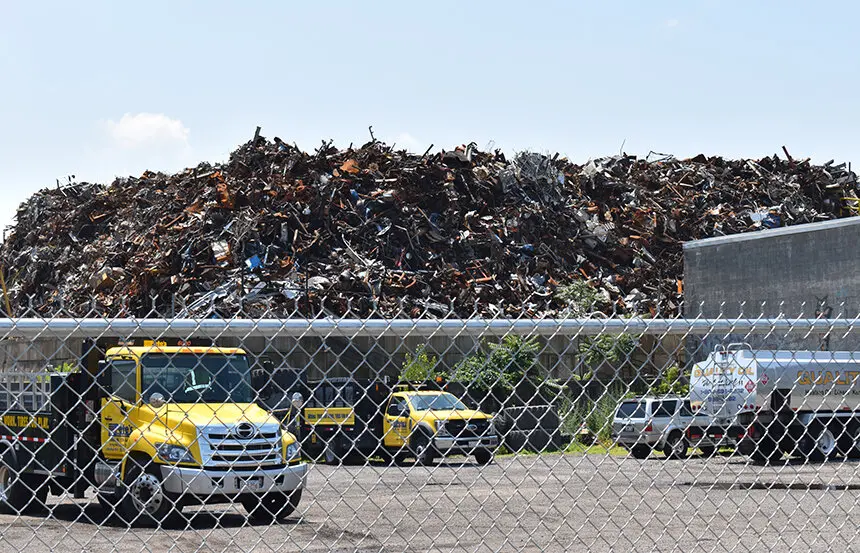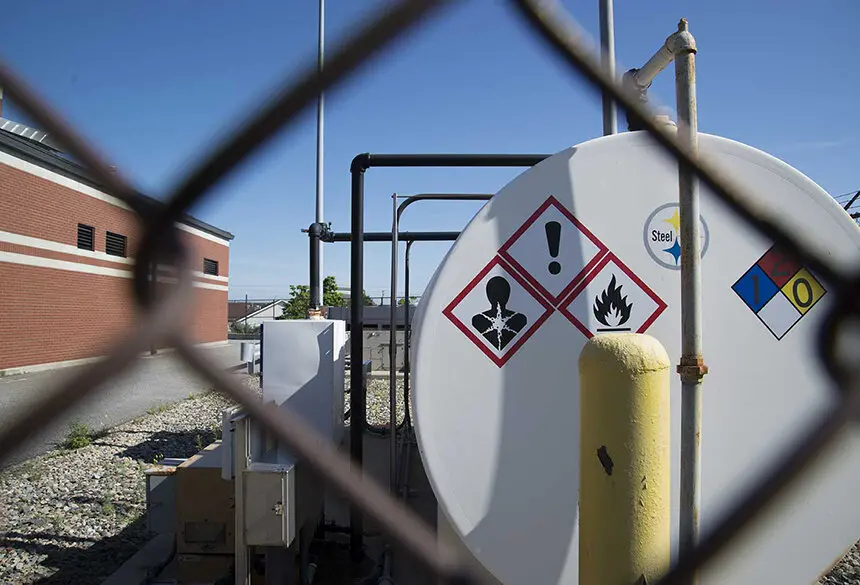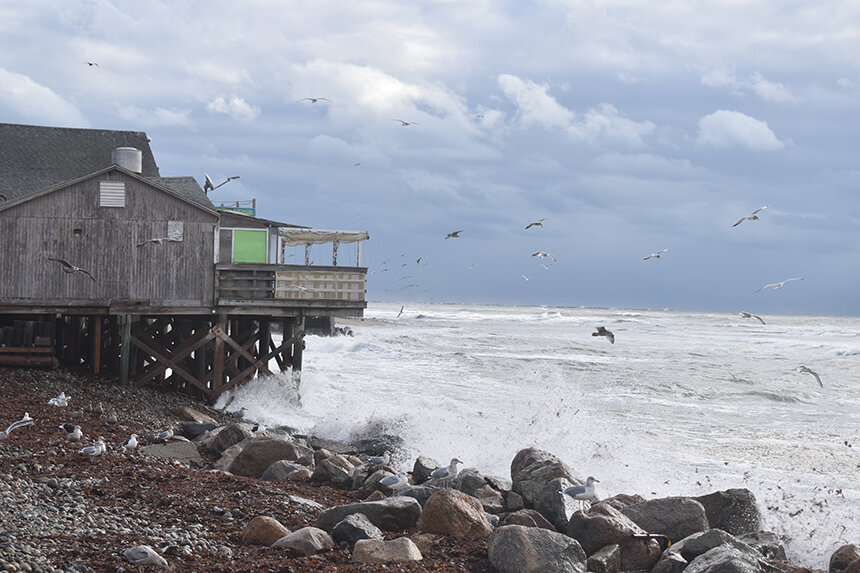
Thirty minutes into Hurricane Rhody, a hypothetical Category 3 storm that would directly impact Rhode Island, the winds in Westerly would reach 70 mph. The gusts knock out an antenna that allows the Fire Department to communicate via radio.
Ninety minutes in, many roads along Westerly’s vulnerable coast are submerged by more than 8 inches of water, the threshold at which emergency vehicles can pass. Two hours into the theoretical storm, 2- and 3-foot inundation threatens the town’s wastewater treatment plant.
Austin Becker, associate professor and chair of the Department of Marine Affairs at the University of Rhode Island, doesn’t shy away from worst-case scenarios. In fact, he aims to prepare the constituencies he works with, such as the town of Westerly, for them. The scene described above was projected by his work on the Rhode Island Coastal Hazards, Analysis, Modeling and Prediction project, which integrates the concerns of managers overseeing local emergency systems with storm model outputs.
Becker discussed his 15 years of work on coastal adaptation during an online discussion held this past fall co-sponsored by Brown University’s Policy Lab and the Institute at Brown for Environment & Society. The discussion was titled “How can we increase the resilience of coastal infrastructure to better serve communities?”

As a nonprofit journalism organization, we depend on your support to fund critical stories in local U.S. newsrooms. Donate any amount today to become a Pulitzer Center Champion and receive exclusive benefits!
While his research in Westerly focused on the resilience of emergency management systems, Becker primarily studies how ports in and outside of Rhode Island are impacted by and can adapt to the climate crisis.
“I spend a lot of time researching ports, because there’s no Plan B,” Becker said. “You can’t relocate ports. They have to be right on the coast, as opposed to other commercial or residential uses.”
Port infrastructure is critical to the global economy, with 90 percent of the world’s freight moved by ship, according to Becker. Locally, the Port of Providence is the second-largest deepwater port in New England, facilitating domestic and international trade. As of 2017, the Port of Providence, which includes ProvPort, has generated more than $32 million in direct city revenues.
Becker noted that adaptation of ports is complex, given the multitude of private and public stakeholders typically involved. ProvPort is no exception. The 27-year-old nonprofit holds the port’s operating rights, has a five-member board of directors, including one appointed by the mayor and one appointed by the Providence City Council, and is managed by a private company, Waterson Terminal Services.
As the climate changes, the potential for more Category 3, 4 and 5 hurricanes, rising sea levels and increased precipitation threaten this infrastructure in the form of direct damages to structures and equipment, indirect costs such as lost wages and after-storm cleanup, and intangible impacts on quality of life, especially for the nearby neighborhoods of South Providence and Washington Park.

The Port of Providence is at risk with 3 feet of sea-level rise. Flooding there could unleash the toxic mix of home heating oil, jet and diesel fuel, natural gas and chemicals that is stored along Providence’s industrial waterfront. The port isn’t protected by the Fox Point Hurricane Protection Barrier.
The risks to ports by climate change aren't sufficiently addressed on a global scale, according to Becker. A decade ago, the interdisciplinary scientist conducted a survey of 200 of the world’s top port authorities regarding climate adaptation efforts. Just 4 percent had adopted a specific policy adaptation document, but “when we followed up with these ports, in order to have them send along the evidence of these, we were not able to find any evidence of actual policy documents that included adaptation at that time,” Becker said.
Barriers to climate adaptation include a dearth of standards and guidance for such issues as sea-level rise in development design, a lack of understanding the risks and a lack of funding, among others. In Rhode Island, Becker said, there isn’t consensus around who should take leadership over adapting the Port of Providence for the climate crisis.
In a survey he conducted, port stakeholders gave a variety of responses about who should take the lead on implementing resilience strategies. Businesses, the Coastal Resources Management Council and the Rhode Island Department of Environmental Management were a few that popped up repeatedly.
“There isn’t a real clear answer to this,” Becker said. “Taking the lead on this is difficult because it’s a significant investment. It requires bringing a lot of stakeholders together in collaboration and there are not always clear incentives.”
Politicians, concerned more about being re-elected, aren’t necessarily focused on investing to prevent hypothetical damages decades in the future, Becker said. And businesses typically think on a quarterly or yearly basis, instead of a five- to 10-year time horizon, he added. He believes the problem is too big to rest on the shoulders of one entity, anyway.
“The real challenge for us is to be finding ways to come together to recognize the collective risk that we all share and the collective responsibility that we have to play a role in building resilience,” Becker said. “Whether that’s through political will and the power of the vote, or making investments in specific pieces of infrastructure.”
A manageable first step toward resilience planning is conducting vulnerability assessments, Becker said, as these typically clarify the key problems each port faces. His team conducted a vulnerability assessment at the Port of Providence in 2015 to determine which approach — protecting the port, relocating it, accommodating it, or doing nothing — would best meet the resilience needs of the 30 or so businesses there.
Together with these stakeholders, they determined that building a storm barrier at the mouth of the Providence River would maximize meeting their resilience goals of minimizing hurricane-related infrastructure damages and environmental damages from port uses, ensuring post-hurricane continuity for waterfront businesses and protecting public safety.
“The point was not to choose a direction to go in, it was really just to start us thinking about what some of the options are that might be on the table,” Becker said. “When we start spending the time to think about our children and grandchildren’s lives, the implications of what we decide today really, really matter,” he said.










